Abstract
The current from a white noise generator was applied as a stimulus to a space-clamped squid axon in double sucrose gap. The membrane current and the voltage response of the membrane were then amplified, recorded on magnetic tape, and the stimulus was cross-correlated with the response. With subthreshold stimuli, a cross-correlation function resembling that obtained from a resonant parallel circuit is obtained. As the intensity of the input noise is increased, the cross-correlation function resembles that obtained from a less damped oscillatory circuit. When the noise intensity is further increased so that an appreciable frequency of action potentials is observed, an additional component appears in the experimental cross-correlogram. The subthreshold cross-correlogram is analyzed theoretically in terms of the linearized Hodgkin-Huxley equations. The subthreshold axon approximates a parallel resonant circuit. The circuit parameters are temperature dependent, with resonant frequency varying from approximately 100 Hz at 10°C to approximately 250 Hz at 20°C. The Q10 of the resonant frequency is equal to 1.9. These values are in agreement with values found previously for subthreshold oscillations following a single action potential.
Full text
PDF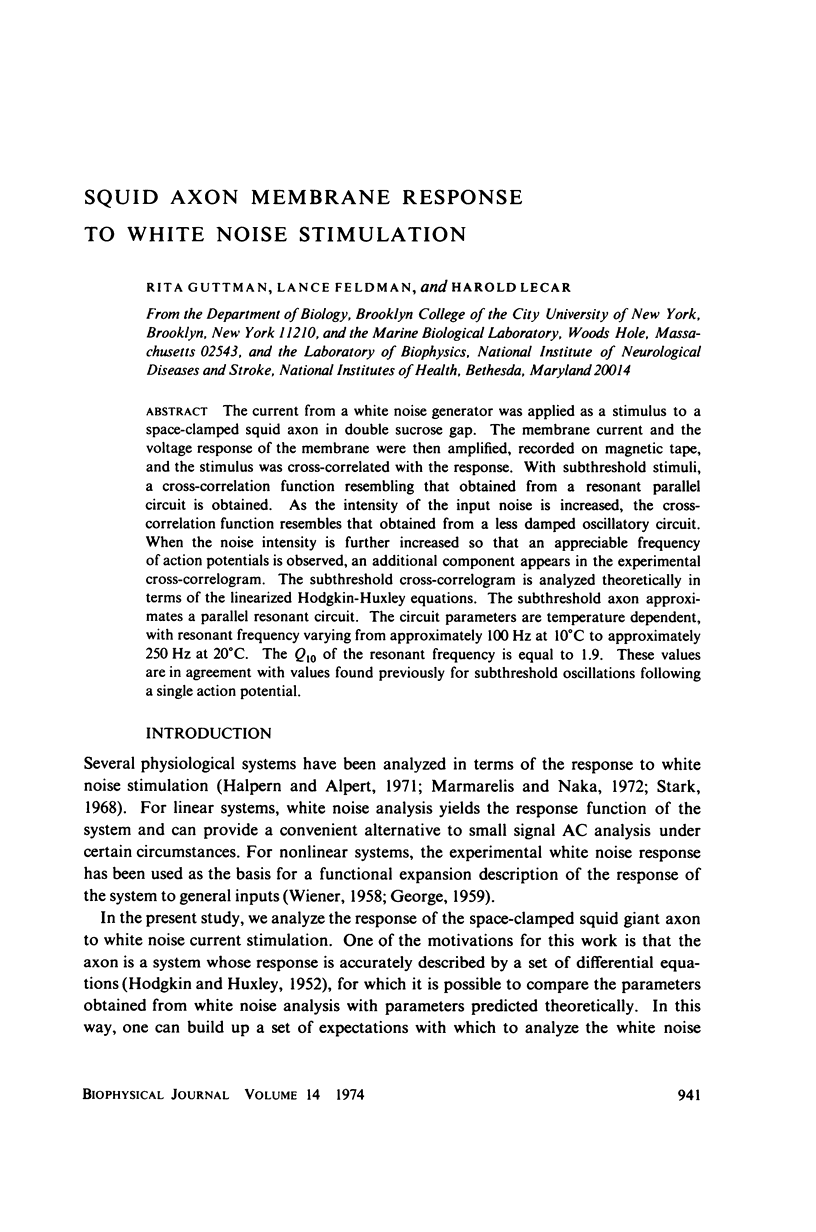
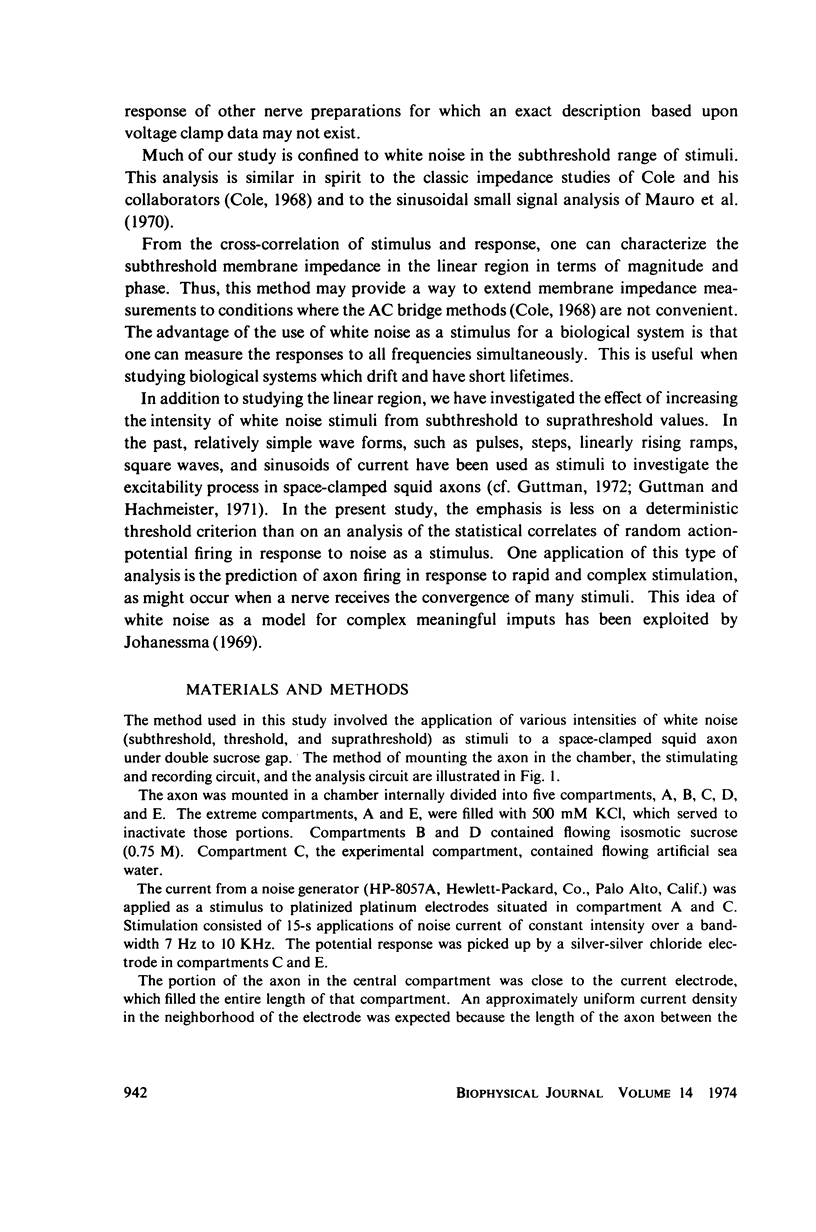

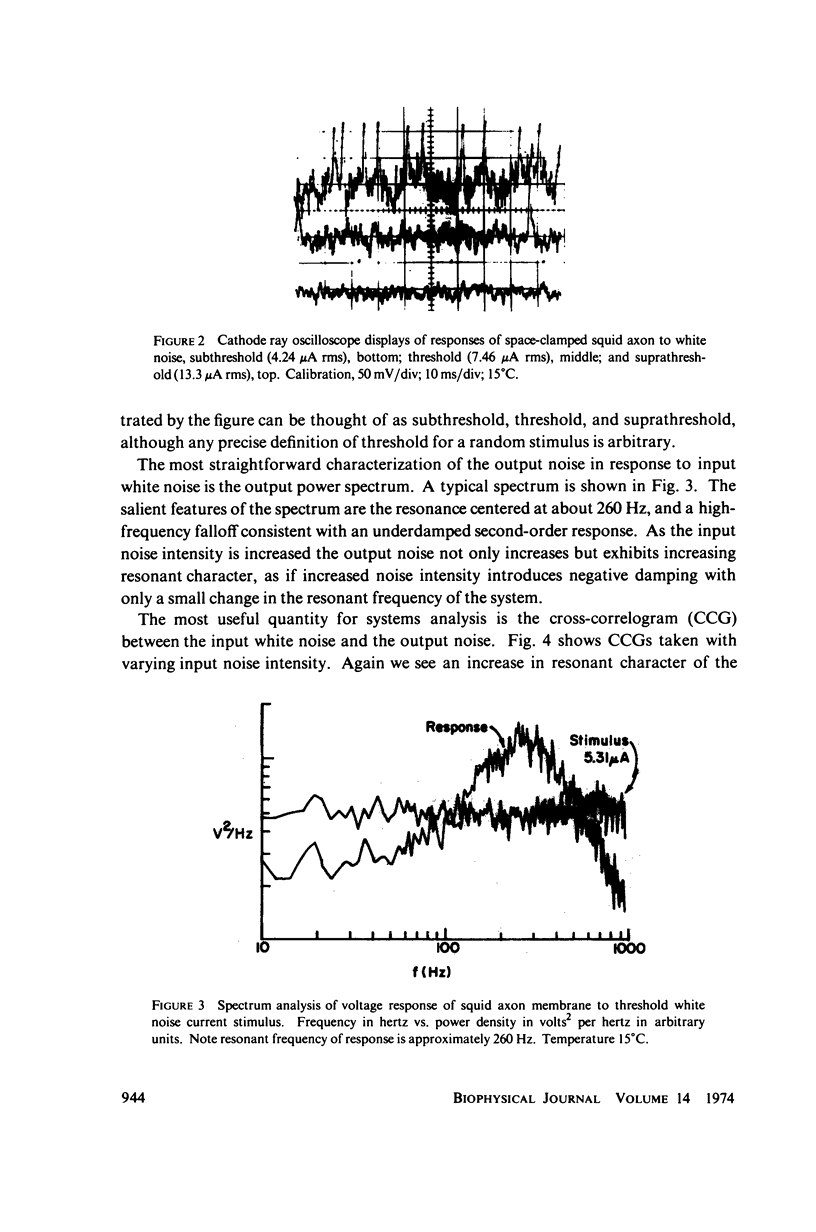
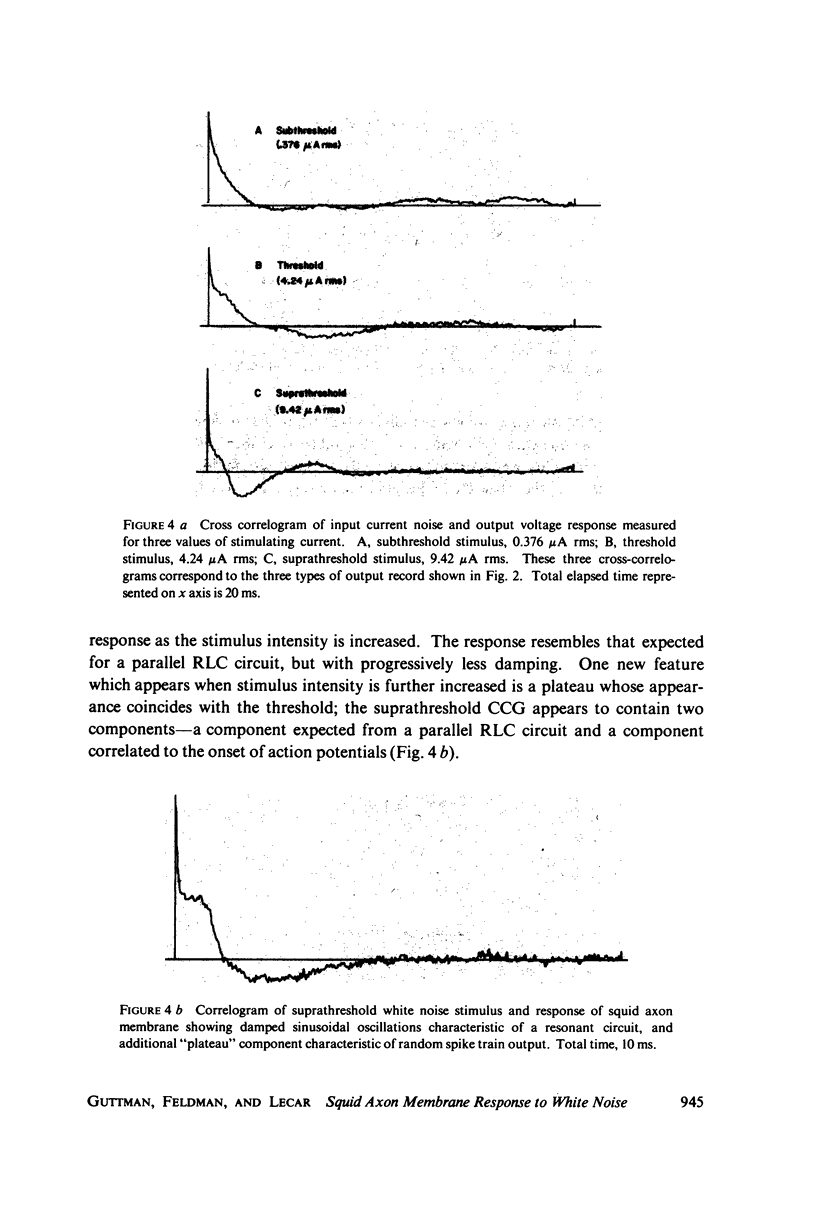
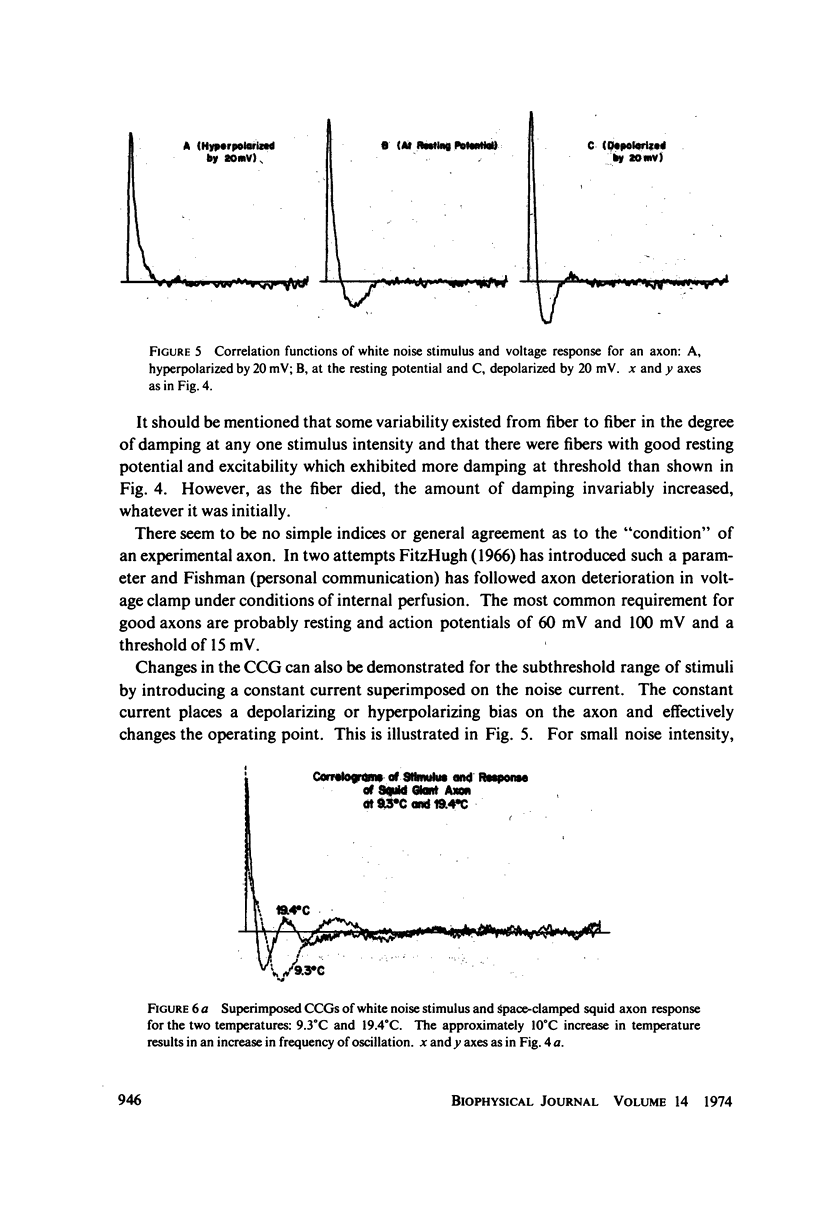
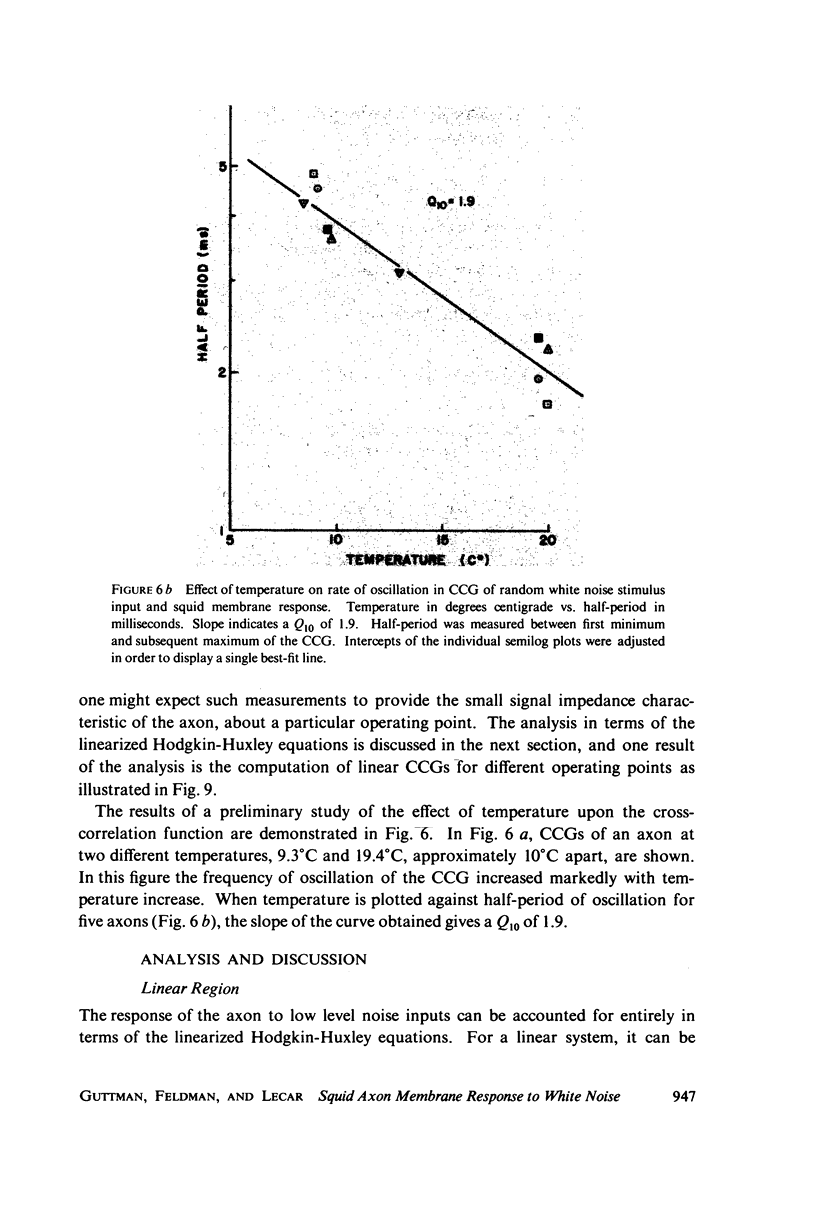
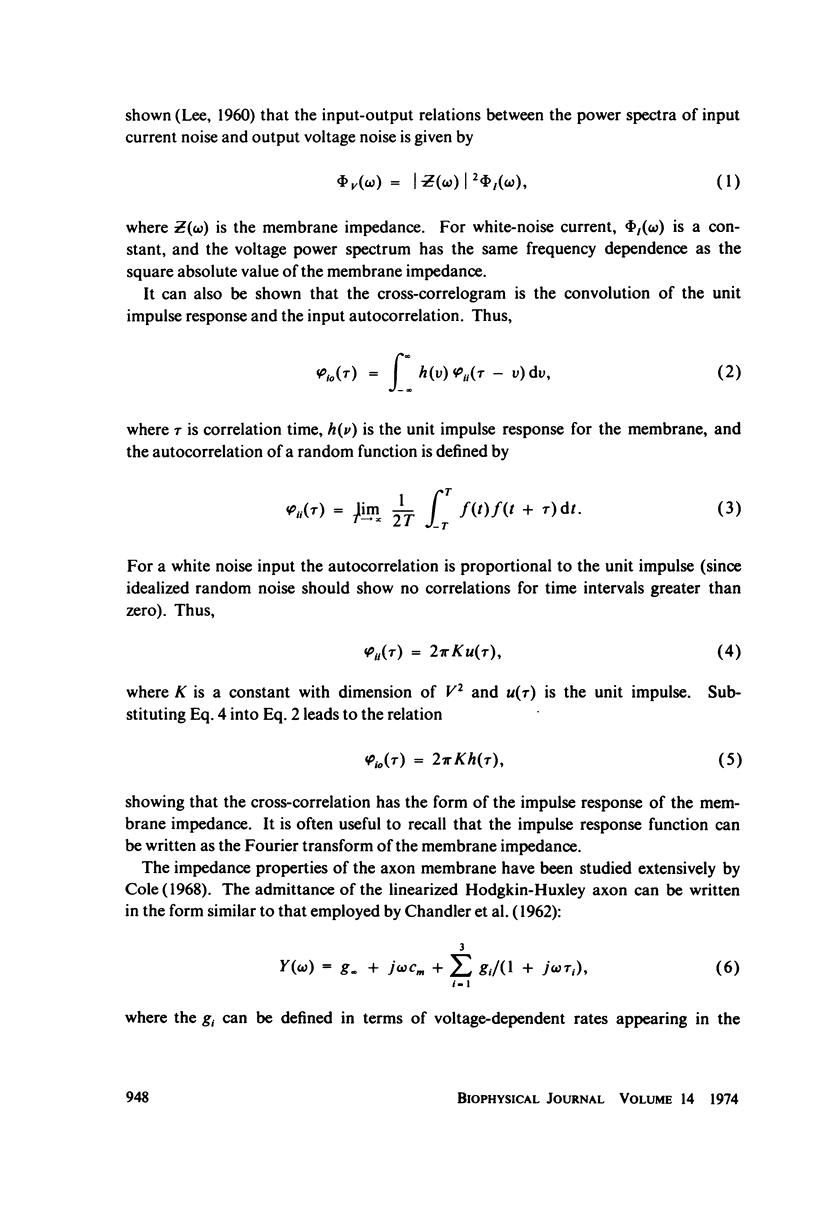


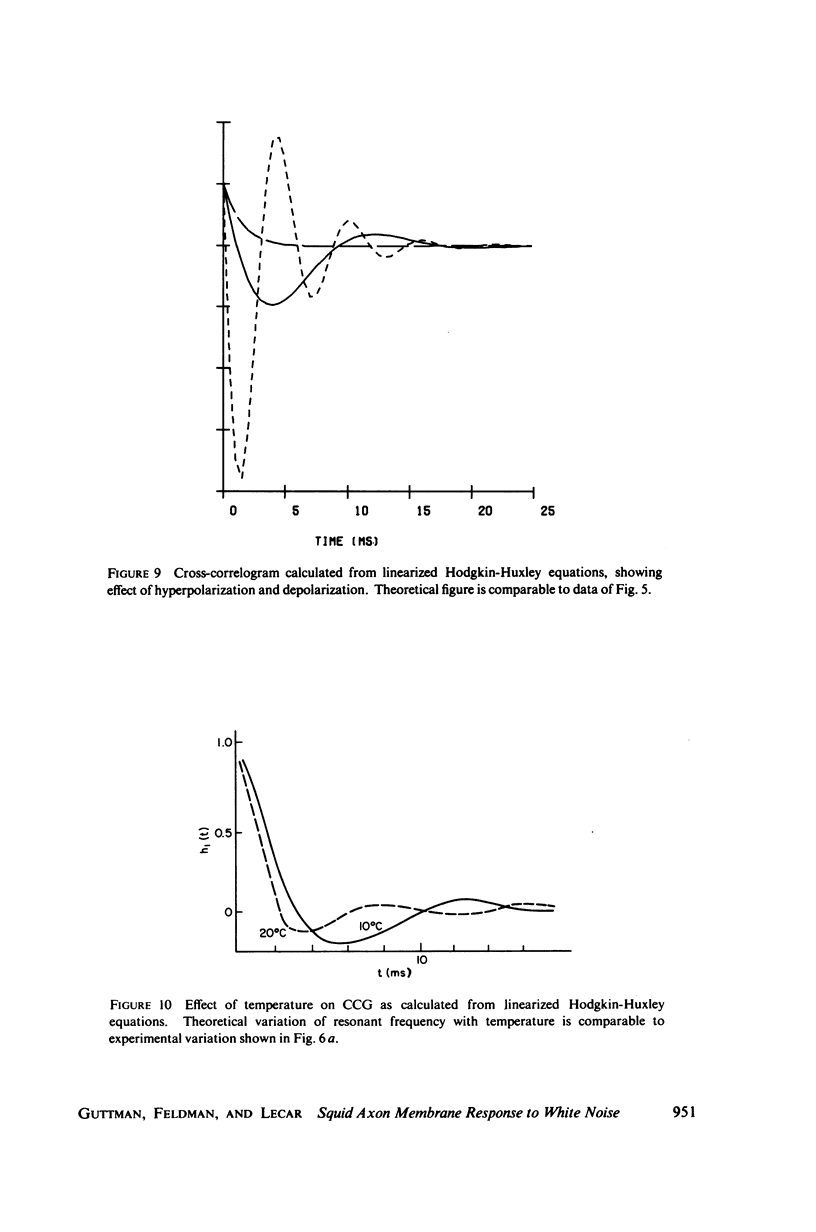
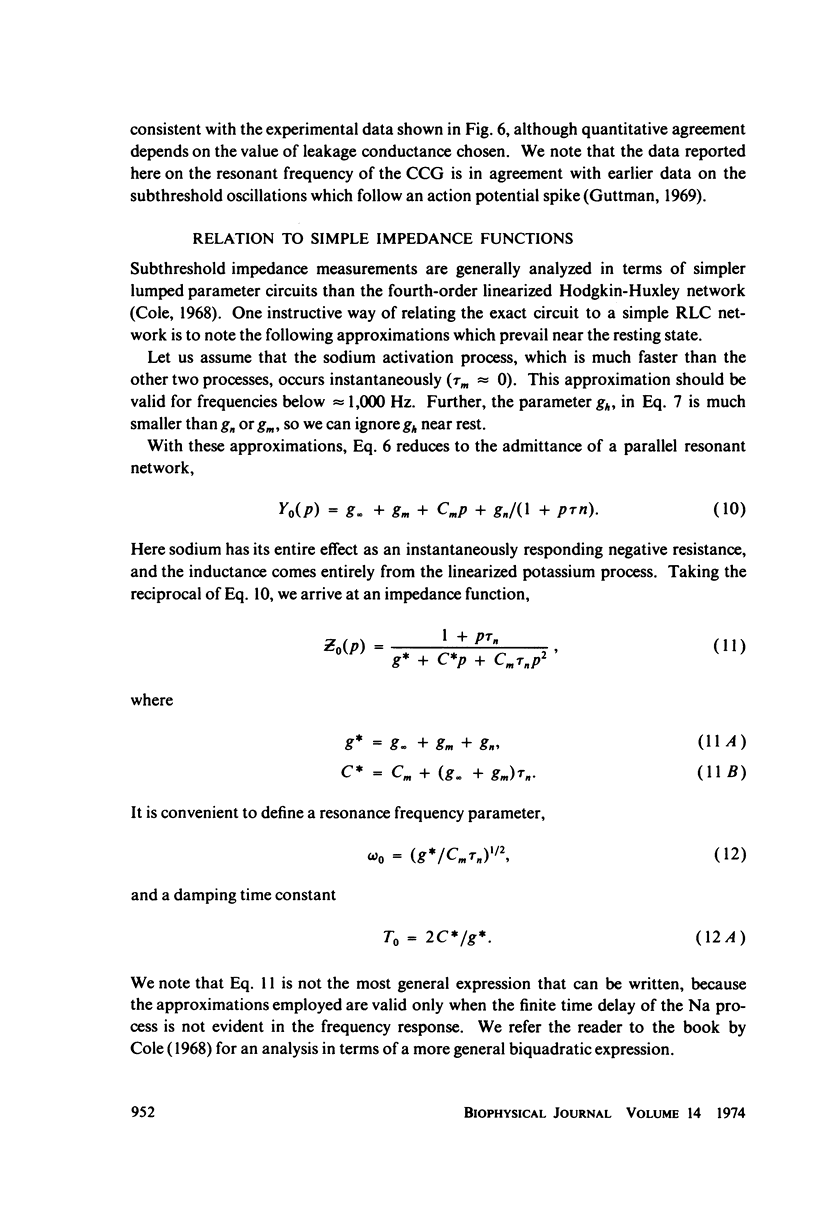

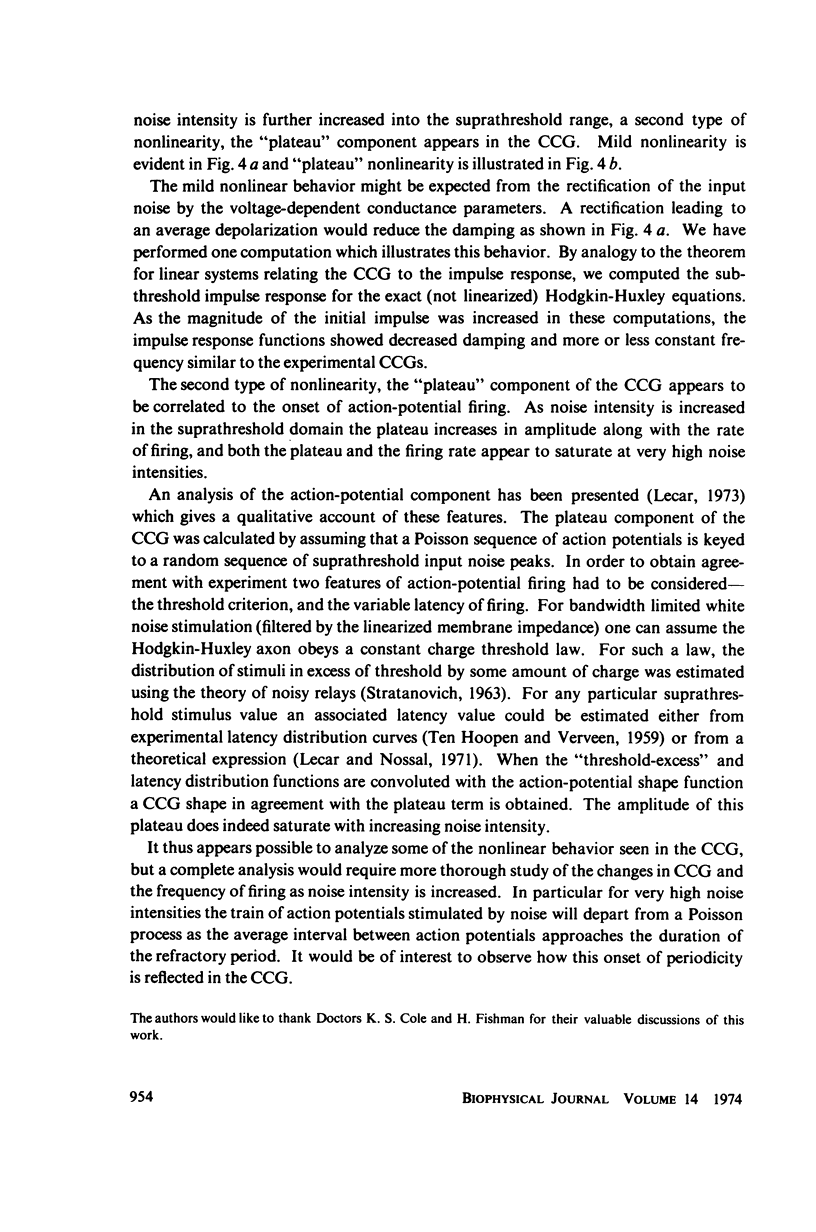
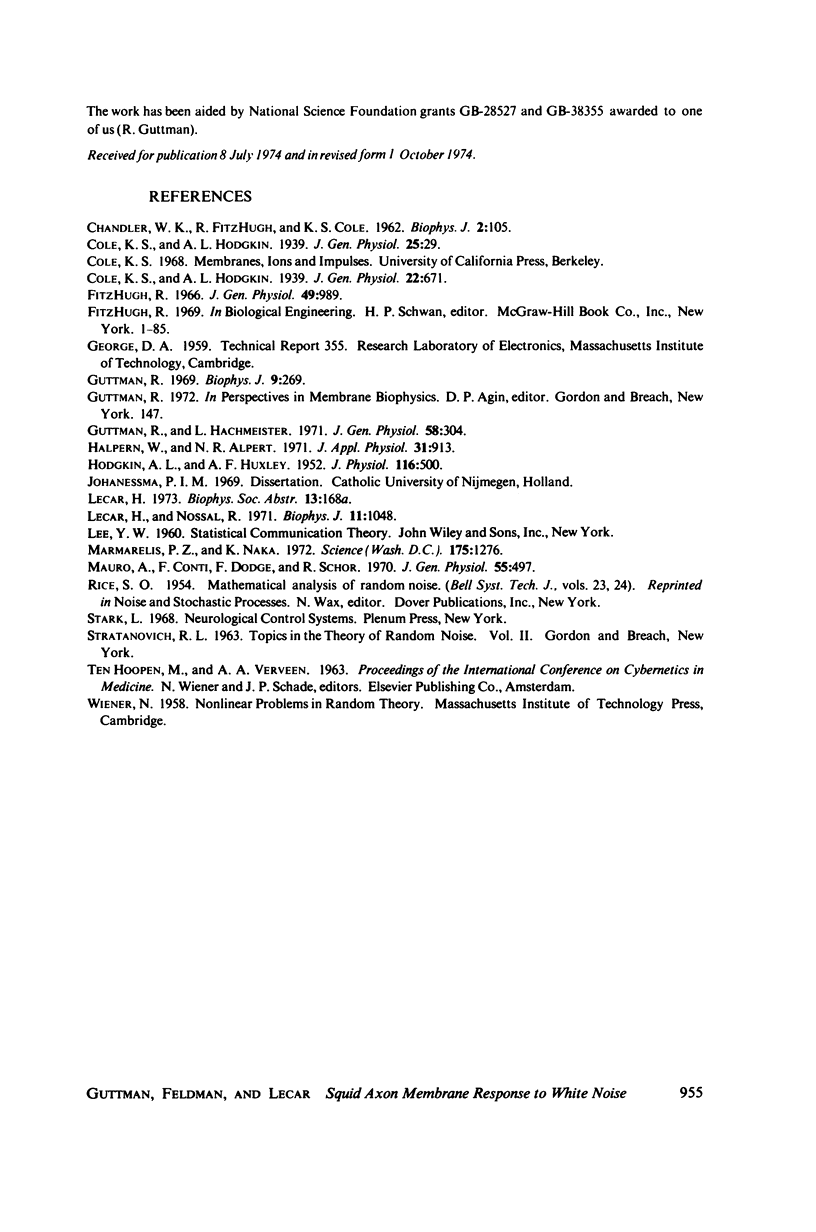
Selected References
These references are in PubMed. This may not be the complete list of references from this article.
- CHANDLER W. K., FITZHUGH R., COLE K. S. Theoretical stability properties of a space-clamped axon. Biophys J. 1962 Mar;2:105–127. doi: 10.1016/s0006-3495(62)86844-1. [DOI] [PMC free article] [PubMed] [Google Scholar]
- Cole K. S., Hodgkin A. L. MEMBRANE AND PROTOPLASM RESISTANCE IN THE SQUID GIANT AXON. J Gen Physiol. 1939 May 20;22(5):671–687. doi: 10.1085/jgp.22.5.671. [DOI] [PMC free article] [PubMed] [Google Scholar]
- Fitzhugh R. Theoretical effect of temperature on threshold in the Hodgkin-Huxley nerve model. J Gen Physiol. 1966 May;49(5):989–1005. doi: 10.1085/jgp.49.5.989. [DOI] [PMC free article] [PubMed] [Google Scholar]
- Guttman R., Hachmeister L. Effect of calcium, temperature, and polarizing currents upon alternating current excitation of space-clamped squid axons. J Gen Physiol. 1971 Sep;58(3):304–321. doi: 10.1085/jgp.58.3.304. [DOI] [PMC free article] [PubMed] [Google Scholar]
- Guttman R. Temperature dependence of oscillation in squid axons: comparison of experiments with computations. Biophys J. 1969 Mar;9(3):269–277. doi: 10.1016/S0006-3495(69)86385-X. [DOI] [PMC free article] [PubMed] [Google Scholar]
- HODGKIN A. L., HUXLEY A. F. A quantitative description of membrane current and its application to conduction and excitation in nerve. J Physiol. 1952 Aug;117(4):500–544. doi: 10.1113/jphysiol.1952.sp004764. [DOI] [PMC free article] [PubMed] [Google Scholar]
- Halpern W., Alpert N. R. A stochastic signal method for measuring dynamic mechanical properties of muscle. J Appl Physiol. 1971 Dec;31(6):913–925. doi: 10.1152/jappl.1971.31.6.913. [DOI] [PubMed] [Google Scholar]
- Lecar H., Nossal R. Theory of threshold fluctuations in nerves. I. Relationships between electrical noise and fluctuations in axon firing. Biophys J. 1971 Dec;11(12):1048–1067. doi: 10.1016/S0006-3495(71)86277-X. [DOI] [PMC free article] [PubMed] [Google Scholar]
- Marmarelis P. Z., Naka K. White-noise analysis of a neuron chain: an application of the Wiener theory. Science. 1972 Mar 17;175(4027):1276–1278. doi: 10.1126/science.175.4027.1276. [DOI] [PubMed] [Google Scholar]
- Mauro A., Conti F., Dodge F., Schor R. Subthreshold behavior and phenomenological impedance of the squid giant axon. J Gen Physiol. 1970 Apr;55(4):497–523. doi: 10.1085/jgp.55.4.497. [DOI] [PMC free article] [PubMed] [Google Scholar]


